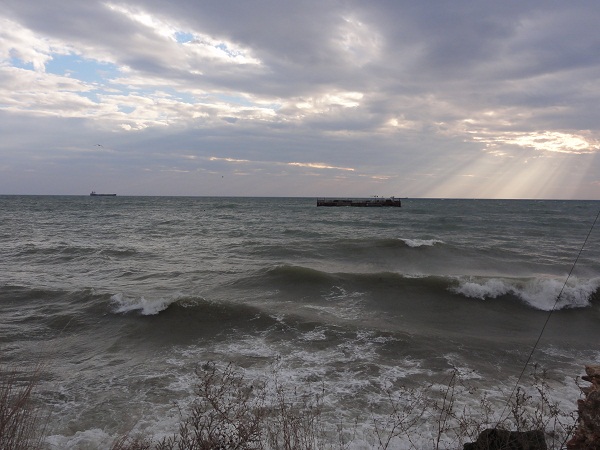Romanian Earth physics expert says tsunami can happen in the Black Sea

 The Black Sea has the required conditions for the creation of seismic waves, according to Gheorghe Marmureanu, director of the national Institute of Research and Development in Earth’s Physics. “A lot of people say that it is not possible to have a tsunami in the Black Sea, because it is like a closed basin. I recommend them, from a physics point of view, to agitate the water in a wash basin with their hand and see the waves created”, Marmureanu said in an interview for TV station ProTV.
The Black Sea has the required conditions for the creation of seismic waves, according to Gheorghe Marmureanu, director of the national Institute of Research and Development in Earth’s Physics. “A lot of people say that it is not possible to have a tsunami in the Black Sea, because it is like a closed basin. I recommend them, from a physics point of view, to agitate the water in a wash basin with their hand and see the waves created”, Marmureanu said in an interview for TV station ProTV.
The seismic areas that affect Romania are Vrancea, Banat, Maramures, Bucovina, the north and south of Dobrogea , and the Sabla region, south of Mangalia, located on the Bulgarian territory. Sabla has advanced into the water with around 20-30 km and could trigger a tsunami in the Black Sea. “I personally think that the Sabla fissure could cause big problems due to the hydrogen and sulphuric acid that could be found at 400 meters deep into the Black Sea”, Marmureanu has added.
He has also said that similar phenomena happened in the past in the Black Sea area. To support his argument, he gave the example of a tsunami that occurred in 1901, fuelled by a 7.2 degrees earthquake on the tectonic plate Sabla, that triggered 3.5 meters high waves.
The Romanian media has recently reported on the possibility of an earthquake and tsunami scenario in the Black Sea, after a 9 degrees earthquake, followed by tsunami devastated Japan on March 11. 7.500 people were killed and around 400.000 others remained homeless in Japan. The estimative cost of the losses is of USD 200 billion.
Teodora Vaduva, teodora.vaduva@romania-insider.com















